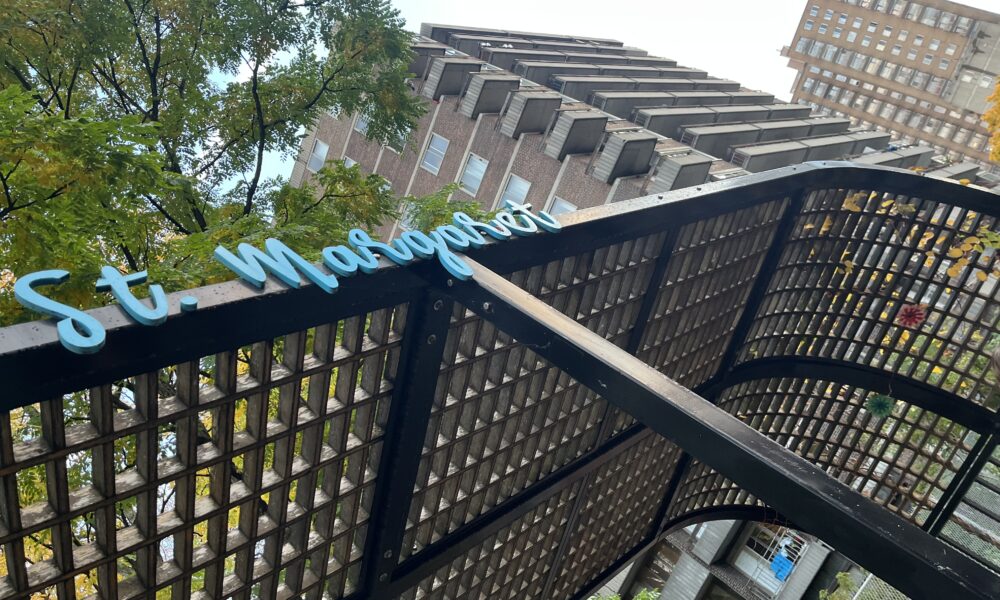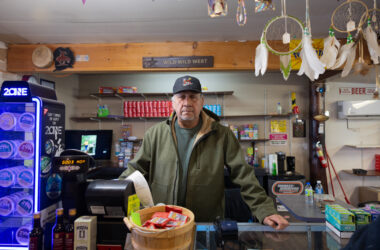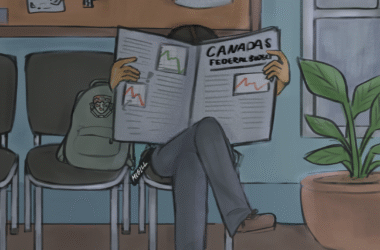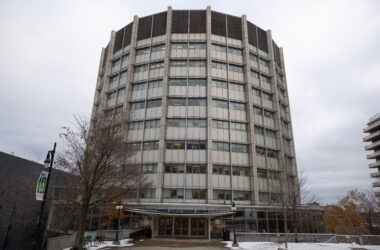On Oct. 23, the Quebec Public Interest Research Group (QPIRG) McGill hosted the “Walking as method: Exploring hostile design in Milton-Parc” workshop as part of its annual Culture Shock event series. This exploration was led by Cara Chellew, PhD candidate in McGill’s School of Urban Planning, as well as Jonathan Lebire, co-founder of coaching organization Agence Dragonfly.
The event kickstarted at QPIRG’s office on av. du Parc, with a group of around 15 people making their way to the street’s intersection with rue Prince-Arthur Ouest. Chellew pointed out bright white light bulbs placed above benches at the intersection.
“Across the street, there’s another light, and you’ll see […] it’s actually blinking,” she observed. “For the longest time, I thought it was malfunctioning. [….] [But] it’s blinking very steadily. It’s been happening for a couple months now. [….] These interventions are meant to really target certain behaviours like trying to sit too long or sleep in public.”
Chellew continued to explain why these acts of hostile urbanism—architectural attempts to restrict certain social groups from enjoying public spaces—are meant to be kept subtle and unnoticeable.
“Often when [hostile urbanism is] really noticeable, […] there’s outrage, rightfully so, and then sometimes, things get removed,” she said. “[Hostile urbanism] is meant to target these kinds of behaviours, but also not be very noticeable to everyday people.”
The group then ventured inside Les Galéries du Parc, where Lebire highlighted the neighbourhood’s lack of third places.
“You want to cry, you want to yell, […] something bad happened in your life, you don’t want to be seen crying. You’re going to transit to your house as soon as you can. But normally there should be what you call ‘third spaces,’ […] to kind of temper having a bad day at the job,” Lebire said. “There should be a way to use this architecture to make sure people have places to take a minute.”
Chellew then added that spaces where people cluster and socialize are crucial to a neighbourhood’s quality of living. She then talked about the intersection of av. du Parc and rue Milton, where an abandoned lot has been heavily restricted to keep Milton-Parc’s unhoused population out, effectively depriving them of third places.
“We’re purposely not going down [av. du Parc] because I want to give our friends a little bit of privacy,” she said. “There’s this lot that folks used to hang out [at]. [….] I call it ‘ground zero’ because it’s really the most heavily fortified spot in the neighbourhood. It just shows every little space here […] is restricted from people accessing [it].”
Chellew and Lebire continued the tour, pointing out benches that were designed to be uncomfortable, with unnecessary armrests meant to keep sleepers away. Such benches could be found at intersections of rue Sherbrooke and rue Jeanne-Mance, and rue Sherbrooke and rue St.-Urbain.
The tour ended at Jardins du Monde et des Premières Nations at the corner of rue St.-Urbain and rue Milton, as Chellew encouraged McGill students to look out for signs of hostile urban planning.
“There are certain things that you can kind of look out for. When you’re checking out a space, are there places to sit? Does the space feel comfortable? Does it feel uncomfortable for some reason? Why is it uncomfortable? Is it too bright or too loud?” she emphasized.
In an interview with The Tribune, Joseph Liang, the Students’ Society of McGill University (SSMU) Popular Education Events Coordinator, explained that this year’s Culture Shock aims to examine the McGill and Montreal community’s relations to the land through various anti-oppressive perspectives.
“For example [.…] with the Migrant Justice Panel [Culture Shock event], we look at land in terms of […] border regimes that are imposed on land,” they said. “I think [this land theme] is particularly relevant in the context that we’re living in. The settler-colonial occupation that we see happening in Palestine, that is fundamentally an issue of land, an issue of occupation of land. Here in Quebec, the PL 97 was a law that granted a lot of [Indigenous] land in northern Quebec to forestry companies. [….] I think land is sort of at the center of a lot of struggles that we are seeing right now.”







